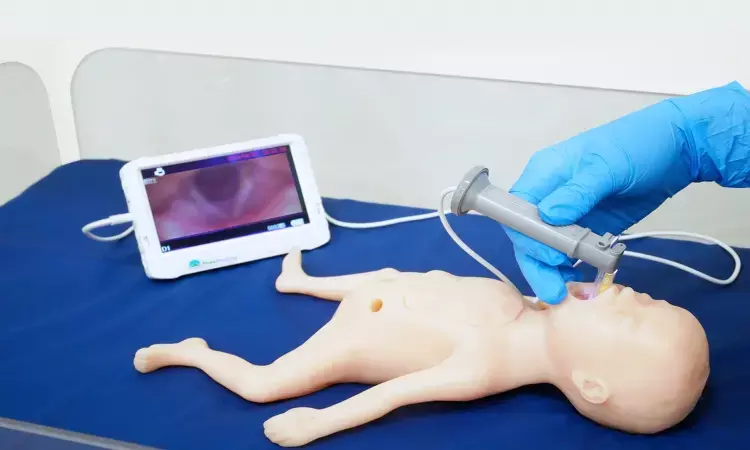- Home
- Medical news & Guidelines
- Anesthesiology
- Cardiology and CTVS
- Critical Care
- Dentistry
- Dermatology
- Diabetes and Endocrinology
- ENT
- Gastroenterology
- Medicine
- Nephrology
- Neurology
- Obstretics-Gynaecology
- Oncology
- Ophthalmology
- Orthopaedics
- Pediatrics-Neonatology
- Psychiatry
- Pulmonology
- Radiology
- Surgery
- Urology
- Laboratory Medicine
- Diet
- Nursing
- Paramedical
- Physiotherapy
- Health news
- Fact Check
- Bone Health Fact Check
- Brain Health Fact Check
- Cancer Related Fact Check
- Child Care Fact Check
- Dental and oral health fact check
- Diabetes and metabolic health fact check
- Diet and Nutrition Fact Check
- Eye and ENT Care Fact Check
- Fitness fact check
- Gut health fact check
- Heart health fact check
- Kidney health fact check
- Medical education fact check
- Men's health fact check
- Respiratory fact check
- Skin and hair care fact check
- Vaccine and Immunization fact check
- Women's health fact check
- AYUSH
- State News
- Andaman and Nicobar Islands
- Andhra Pradesh
- Arunachal Pradesh
- Assam
- Bihar
- Chandigarh
- Chattisgarh
- Dadra and Nagar Haveli
- Daman and Diu
- Delhi
- Goa
- Gujarat
- Haryana
- Himachal Pradesh
- Jammu & Kashmir
- Jharkhand
- Karnataka
- Kerala
- Ladakh
- Lakshadweep
- Madhya Pradesh
- Maharashtra
- Manipur
- Meghalaya
- Mizoram
- Nagaland
- Odisha
- Puducherry
- Punjab
- Rajasthan
- Sikkim
- Tamil Nadu
- Telangana
- Tripura
- Uttar Pradesh
- Uttrakhand
- West Bengal
- Medical Education
- Industry
Video laryngoscopy in infants facilitates orotracheal intubation in first attempt: Study

USA: The use of video laryngoscopy with a standard blade improves first-attempt success rate of orotracheal intubation and reduces complications, reveals a recent study in the journal Lancet.
Using direct laryngoscopy for orotracheal intubation in infants can be challenging. Annery G Garcia-Marcinkiewicz, The Children's Hospital of Philadelphia, Philadelphia, USA, and colleagues aimed to investigate whether video laryngoscopy with a standard blade done by anaesthesia clinicians helps in improving the first-attempt success rate of orotracheal intubation and reduces complications risk versus the direct laryngoscopy. The researchers hypothesized that the first-attempt success rate would be higher with video laryngoscopy than with direct laryngoscopy.
The researchers recruited infants without difficult airways abnormalities requiring orotracheal intubation in operating theatres at four quaternary children's hospitals in the USA and one in Australia. 564 infants were randomly assigned in the ratio 1:1 to receive either video laryngoscopy (n=282) or direct laryngoscopy (n=282). The mean age of infants was 5·5 months.
274 infants in the video laryngoscopy group and 278 infants in the direct laryngoscopy group were included in the mITT analysis.
The primary outcome was the proportion of infants with a successful first attempt at orotracheal intubation.
Key findings of the study include:
- In the video laryngoscopy group, 254 (93%) infants were successfully intubated on the first attempt compared with 244 (88%) in the direct laryngoscopy group (adjusted absolute risk difference 5·5%).
- Severe complications occurred in four (2%) infants in the video laryngoscopy group compared with 15 (5%) in the direct laryngoscopy group (–3·7%).
- Fewer oesophageal intubations occurred in the video laryngoscopy group (n=1 [<1%]) compared with in the direct laryngoscopy group (n=7 [3%]; –2·3).
"Among anaesthetised infants, using video laryngoscopy with a standard blade improves the first-attempt success rate and reduces complications," concluded the authors.
"First-attempt success rate of video laryngoscopy in small infants (VISI): a multicentre, randomised controlled trial," is published in the journal Lancet.
DOI: https://doi.org/10.1016/S0140-6736(20)32532-0
Dr Kamal Kant Kohli-MBBS, DTCD- a chest specialist with more than 30 years of practice and a flair for writing clinical articles, Dr Kamal Kant Kohli joined Medical Dialogues as a Chief Editor of Medical News. Besides writing articles, as an editor, he proofreads and verifies all the medical content published on Medical Dialogues including those coming from journals, studies,medical conferences,guidelines etc. Email: drkohli@medicaldialogues.in. Contact no. 011-43720751


